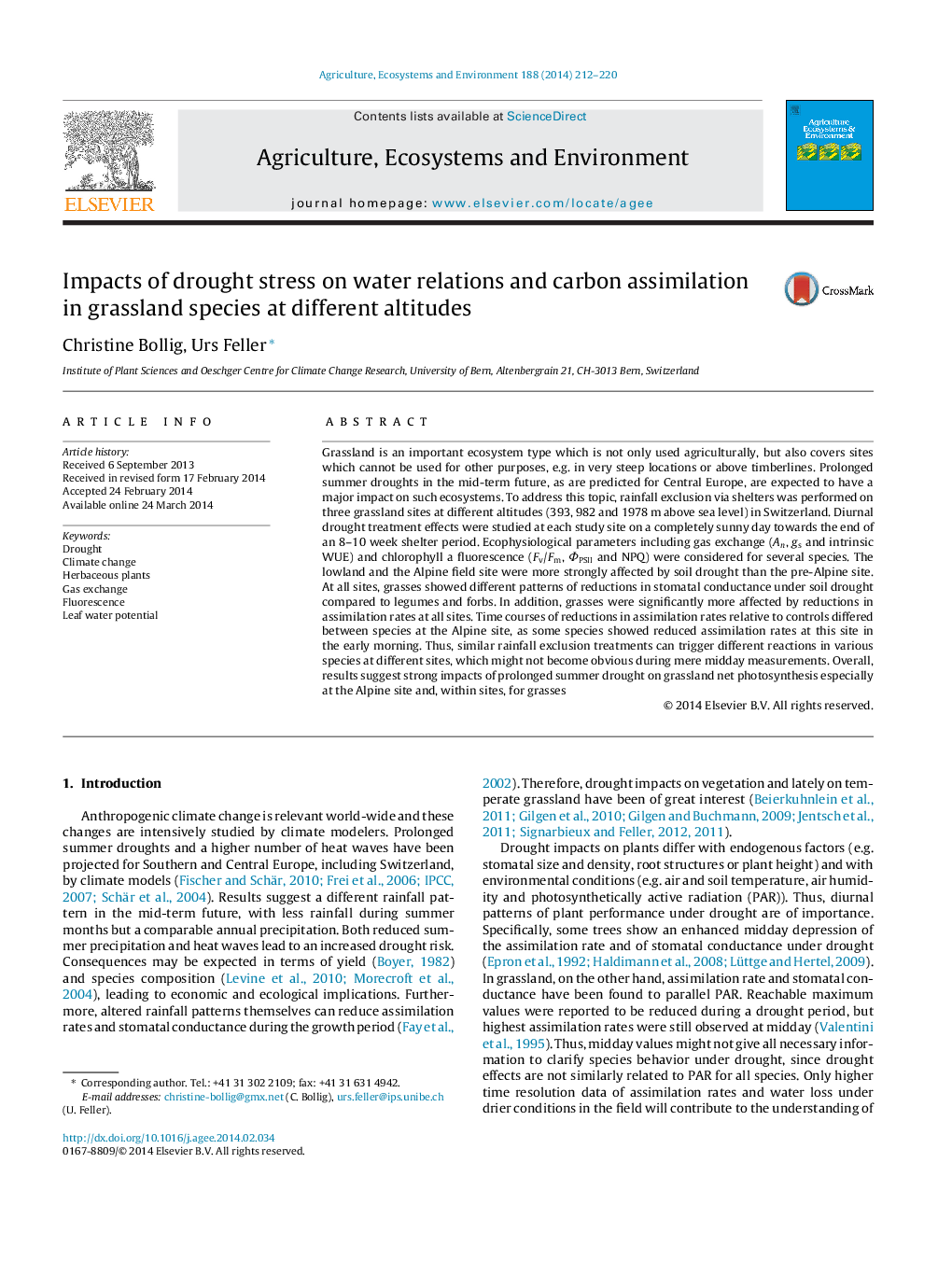| Article ID | Journal | Published Year | Pages | File Type |
|---|---|---|---|---|
| 8487879 | Agriculture, Ecosystems & Environment | 2014 | 9 Pages |
Abstract
Grassland is an important ecosystem type which is not only used agriculturally, but also covers sites which cannot be used for other purposes, e.g. in very steep locations or above timberlines. Prolonged summer droughts in the mid-term future, as are predicted for Central Europe, are expected to have a major impact on such ecosystems. To address this topic, rainfall exclusion via shelters was performed on three grassland sites at different altitudes (393, 982 and 1978 m above sea level) in Switzerland. Diurnal drought treatment effects were studied at each study site on a completely sunny day towards the end of an 8-10 week shelter period. Ecophysiological parameters including gas exchange (An, gs and intrinsic WUE) and chlorophyll a fluorescence (Fv/Fm, ΦPSII and NPQ) were considered for several species. The lowland and the Alpine field site were more strongly affected by soil drought than the pre-Alpine site. At all sites, grasses showed different patterns of reductions in stomatal conductance under soil drought compared to legumes and forbs. In addition, grasses were significantly more affected by reductions in assimilation rates at all sites. Time courses of reductions in assimilation rates relative to controls differed between species at the Alpine site, as some species showed reduced assimilation rates at this site in the early morning. Thus, similar rainfall exclusion treatments can trigger different reactions in various species at different sites, which might not become obvious during mere midday measurements. Overall, results suggest strong impacts of prolonged summer drought on grassland net photosynthesis especially at the Alpine site and, within sites, for grasses
Related Topics
Life Sciences
Agricultural and Biological Sciences
Agronomy and Crop Science
Authors
Christine Bollig, Urs Feller,
